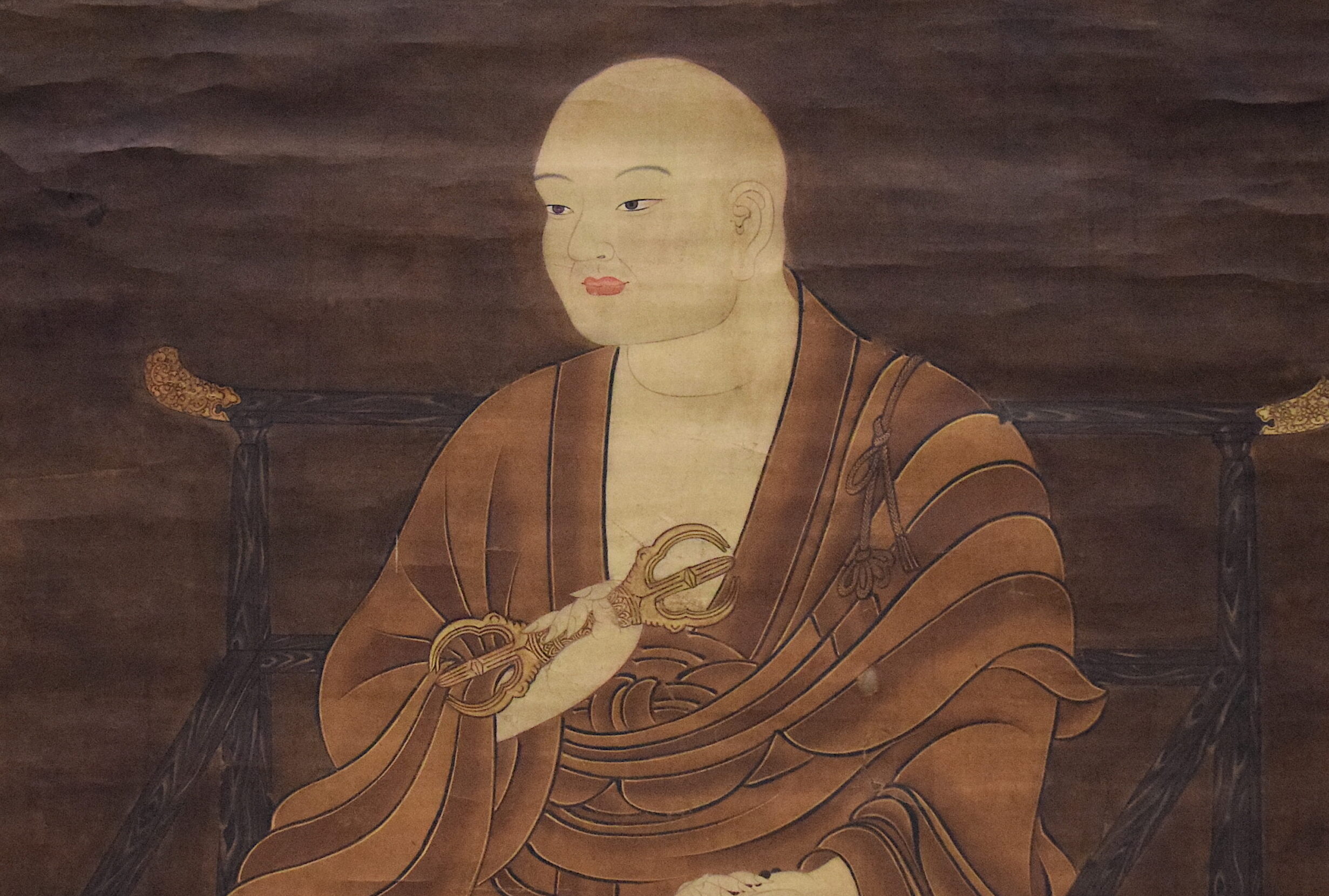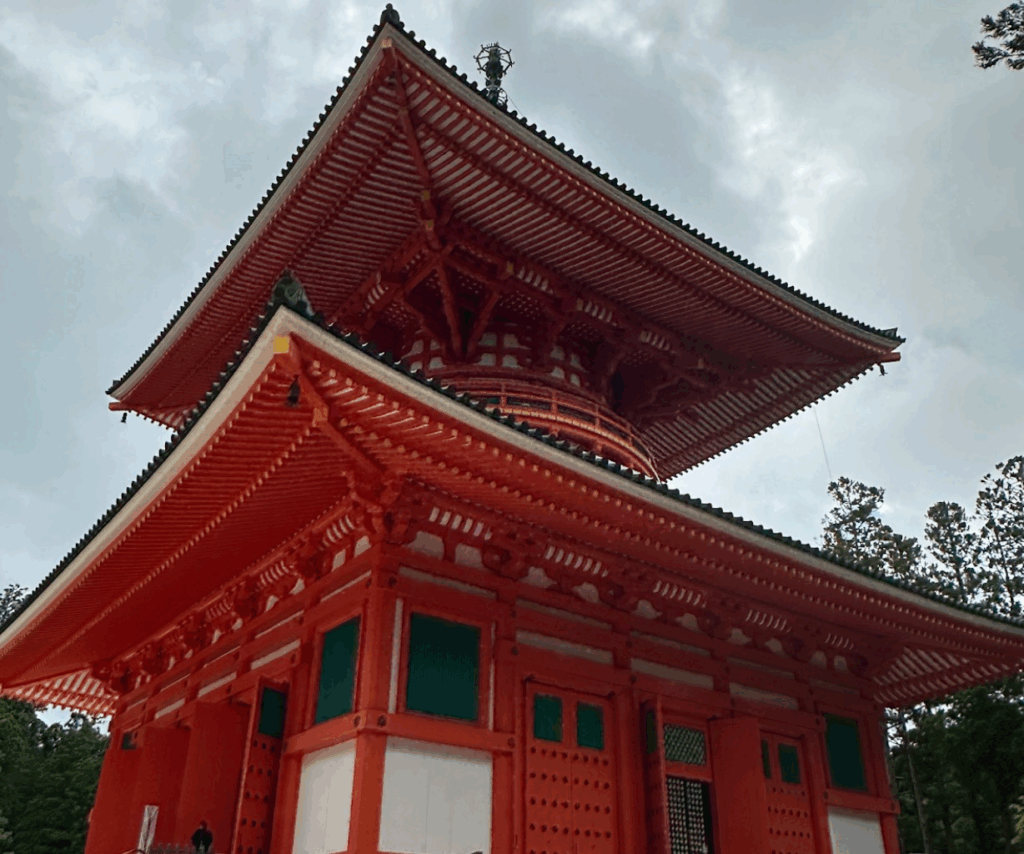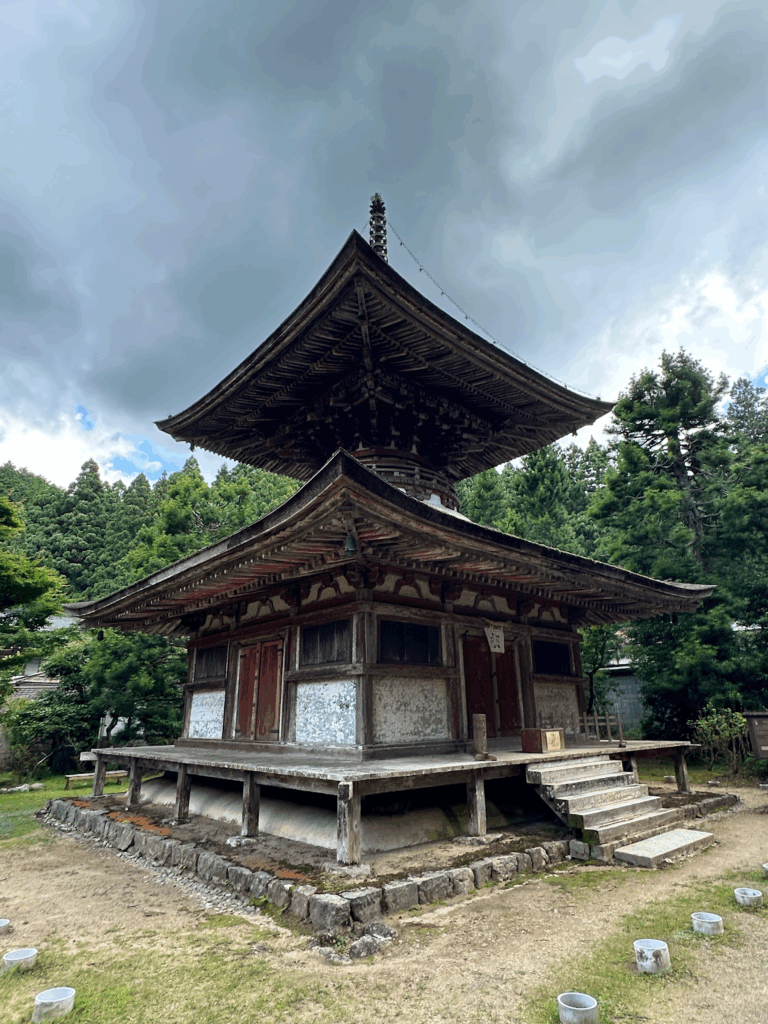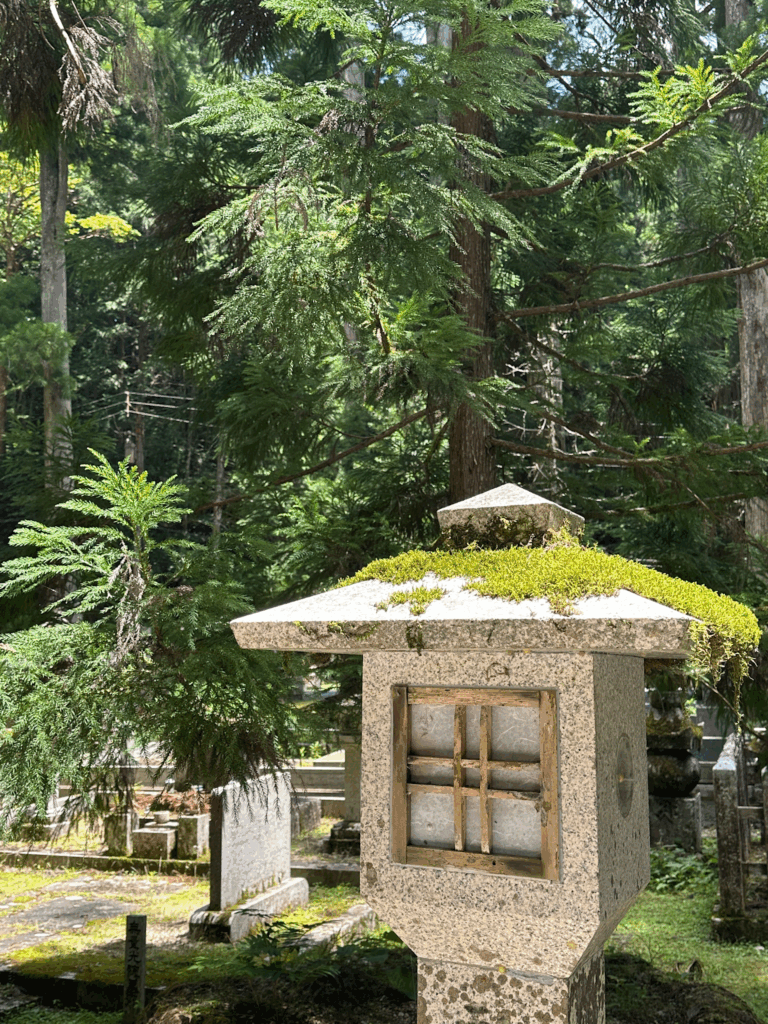Koyasan: Walking into the Heart of Silence

In August, our Gassho team traveled to Koyasan, the sacred mountain plateau in Wakayama Prefecture. Founded over 1,200 years ago by the monk Kukai (Kobo Daishi), Koyasan is today one of Japan’s most important spiritual centers and part of the UNESCO World Heritage “Sacred Sites and Pilgrimage Routes in the Kii Mountain Range.” Koyasan is not only a destination—it is an experience. It is where history, silence, and spirituality merge into one.
The History of Koyasan and Kukai
Koyasan was established in the early 9th century when Kukai (Kobo Daishi) returned from China with esoteric Buddhist teachings. He founded Shingon Buddhism and chose Koyasan as its mountain home.
For centuries, pilgrims and emperors alike have climbed these slopes. Even today, every temple path feels like a thread connecting us back to Kukai’s vision: a place where humans and nature, silence and practice, become one.
The story of Koyasan begins in the early 9th century, during the Heian period of Japan. In the year 804, the young monk Kukai—later known as Kobo Daishi—traveled to China as part of an official mission sent by the imperial court. There, in the Tang capital of Chang’an, he studied the esoteric teachings of Shingon (Mantrayāna) Buddhism under Master Huiguo. Within only a few months, Kukai was recognized as a fully initiated successor, entrusted to bring the teachings back to Japan.
When Kukai returned in 806, he carried with him not only sacred scriptures and mandalas, but also a vision: to establish a monastic center in the mountains, far removed from the distractions of court and city life. After searching, he chose the remote plateau of Koya, surrounded by eight peaks that resemble a lotus flower—a symbol of enlightenment.
In 816, Kukai received imperial permission from Emperor Saga to found a temple complex there. He began building what would become Danjogaran, the symbolic heart of Koyasan, envisioning it as a “mandala in the mountains.” Each hall, pagoda, and path was laid out with cosmic symbolism, creating not just a monastery but an earthly reflection of the Buddhist universe.
Kukai himself lived and taught here, gathering disciples and transmitting rituals, philosophy, and practices of Shingon Buddhism. His writings, such as Sokushin Jōbutsu-gi (“Attaining Buddhahood in This Very Body”), shaped Japanese spirituality for centuries, emphasizing that enlightenment is not distant but possible here and now.
When Kukai passed away in 835, his followers believed he did not die in the ordinary sense, but entered into nyūjō—a state of deep meditation. For over a millennium, it has been said that Kukai remains in meditation at Okunoin, awaiting the coming of the future Buddha, Miroku (Maitreya). Monks still bring him food offerings every day, treating him not as a figure of the past but as a living presence. This daily ritual reflects the enduring faith that Kukai continues to guide and nourish his followers, blurring the boundary between history, devotion, and living culture. From these beginnings, Koyasan grew into one of Japan’s most sacred sites, patronized by emperors, shoguns, and countless pilgrims. The mountain itself is encircled by eight peaks, said to resemble the petals of a lotus blossom, with the central plateau symbolizing enlightenment. Within this natural mandala, the towering pagodas and temple halls represent the cosmic Buddha, Dainichi Nyorai—the embodiment of the universe itself. Today, more than 120 temples continue the rhythms of prayer and practice that Kukai began over 1,200 years ago, making Koyasan not only a historic sanctuary but also a living mandala of faith.
Danjogaran: The Sacred Core

The Danjogaran complex was designed by Kukai himself as the symbolic heart of Koyasan. The towering Konpon Daito Pagoda dominates the landscape, painted in striking vermilion and representing the cosmic Buddha Dainichi Nyorai. Walking through Danjogaran, one senses how Koyasan was envisioned as a “mandala in the mountains,” where each structure represents a sacred element of the universe.
Okunoin: Walking Among Lanterns

The most moving part of Koyasan is Okunoin, the resting place of Kukai. Unlike ordinary cemeteries, Okunoin is a living forest of prayer.
The path, lined with over 200,000 tombstones and ancient cedars, leads to Kobo Daishi’s mausoleum. Here, believers say Kukai is not dead but in eternal meditation, waiting for the future Buddha. Thousands of lanterns glow softly in the halls, filling the air with timeless silence.
Okunoin is not a place of endings—it is a place of continuity, of lives remembered and prayers still alive.
Kongobuji: The Head Temple
At the center of Koyasan lies Kongobuji, the head temple of Shingon Buddhism. Built in the late 16th century, it is a masterpiece of Japanese temple architecture.
Inside, sliding doors painted with golden landscapes open into the Banryutei Rock Garden, the largest in Japan. Its 140 stones symbolize two dragons emerging from a sea of white sand—an image of power and serenity.
Kongobuji is more than a temple; it is the administrative and spiritual heart of Koyasan, where rituals and teachings continue without interruption for centuries.
Kongosanmai-in: A Temple of Living Silence

Among the many temples of Koyasan, Kongosanmai-in became especially meaningful to us at Gassho. Founded in 1211 by Emperor Go-Toba, it is known for its garden with a pond shaped like the Sanskrit character “A,” symbolizing the origin of all things.
Our team was welcomed by Chief Priest Kuri, whose presence reminded us that silence is a living practice. This relationship inspires us to bring the same spirit into our work—creating digital spaces where people can reconnect with stillness.
Koyasan Trip Travel Tips
How to Get to Koyasan from Osaka: Reaching Koyasan from Osaka is easier than it seems.
- Take the Nankai Koya Line from Namba Station to Gokurakubashi Station (about 90 minutes).
- From there, ride the cable car up the steep mountain slope to Koyasan Station (5 minutes).
- Local buses connect the station with Kongobuji, Danjogaran, Okunoin, and temple lodgings.
The journey itself feels like an ascent from the everyday world into a higher, quieter one.
How to Book Temple Lodging (Shukubo): Staying overnight in a temple lodging is one of the most authentic ways to experience Koyasan. Reservations can be made directly through official temple websites, or via booking platforms that specialize in temple stays, such as Japanese Guest Houses or even mainstream sites like Booking.com. Many temples now provide English-language booking options, making the process simple for international visitors.
Costs and Recommended Length of Stay: The average price for a shukubo stay is around ¥10,000–¥20,000 per night (approximately $70–$140 USD), usually including dinner and breakfast featuring shojin ryori (Buddhist vegetarian cuisine). While a day trip from Osaka or Kyoto is possible, most travelers recommend at least one night on the mountain to fully experience the morning prayers and the quiet atmosphere after day-trippers leave.
What to Bring and Wear: Koyasan is located high in the mountains, so the weather can be cooler than in nearby cities. Bring a light jacket or sweater, especially if visiting in the evening or during autumn and winter. Comfortable walking shoes are essential, as many paths are paved with stones and you may spend hours exploring temple grounds and forest trails. A small flashlight can also be handy for evening walks through Okunoin.
Closing Reflection
Koyasan is not a museum of the past—it is a living mandala. From Kongobuji to Danjogaran, from Okunoin to Kongosanmai-in, each site speaks the same truth: silence is alive, and it changes those who walk with it.
For us at Gassho, this journey was more than a visit. It was a reminder that in the stillness of mountains, we find the strength to carry silence back into the world.
Frequently Asked Questions
FAQ 1: Why is Koyasan famous?
Answer: Koyasan is the sacred center of Shingon Buddhism, founded by Kobo Daishi (Kukai) in the 9th century.
Real Results: With over 120 temples and a UNESCO World Heritage designation, it remains a living spiritual hub.
Takeaway: Koyasan blends history, spirituality, and silence in one sacred place.
FAQ 2: What is Kongobuji Temple?
Answer: Kongobuji is the head temple of Shingon Buddhism and the administrative center of Koyasan.
Real Results: It is home to Japan’s largest rock garden and hosts many of the mountain’s central rituals.
Takeaway: Kongobuji is the beating heart of Koyasan.
FAQ 3: What is Danjogaran?
Answer: Danjogaran is a sacred temple complex designed by Kukai to represent the Buddhist universe.
Real Results: The iconic Konpon Daito Pagoda symbolizes the cosmic mandala in Shingon teachings.
Takeaway: Danjogaran is the symbolic center of the mountain.
FAQ 4: What is Okunoin?
Answer: Okunoin is the resting place of Kukai, believed by followers to be in eternal meditation.
Real Results: The approach is lined with over 200,000 tombstones and illuminated by countless lanterns.
Takeaway: Okunoin is where silence feels eternal.
FAQ 5: Can I stay overnight in Koyasan?
Answer: Yes, temple lodging (shukubo) is widely available for visitors.
Real Results: Guests can join morning prayers and experience shojin ryori, the Buddhist vegetarian cuisine.
Takeaway: Staying overnight deepens the spiritual experience.
FAQ 6: What is Kongosanmai-in known for?
Answer: Kongosanmai-in is known for its sacred garden and continuous monastic practice.
Real Results: Its pond, shaped like the Sanskrit letter “A,” symbolizes beginnings and spiritual renewal.
Takeaway: Kongosanmai-in represents renewal and origin.
FAQ 7: How do I travel from Osaka to Koyasan?
Answer: The easiest way is by train and cable car on the Nankai Koya Line.
Real Results: From Namba to Gokurakubashi takes about 90 minutes, followed by a 5-minute cable car ride.
Takeaway: The journey itself feels like a pilgrimage.
FAQ 8: What food can I try in Koyasan?
Answer: Visitors can enjoy shojin ryori, the traditional Buddhist vegetarian cuisine.
Real Results: Typical dishes include tofu, sesame preparations, and seasonal mountain vegetables.
Takeaway: Eating in Koyasan becomes part of the spiritual path.
FAQ 9: Which season is best to visit Koyasan?
Answer: Koyasan offers unique beauty in every season of the year.
Real Results: Cherry blossoms in spring, autumn foliage in fall, and snow-covered temples in winter make each season special.
Takeaway: Koyasan is beautiful all year round.
FAQ 10: Is Koyasan family-friendly?
Answer: Yes, families with children can enjoy its peaceful and welcoming atmosphere.
Real Results: Families often stay in temple lodgings together and join meditation sessions.
Takeaway: Silence and spirituality can be experienced by all generations.


